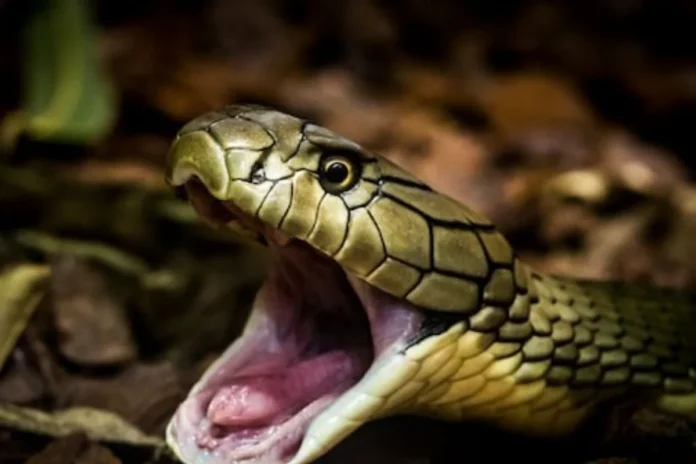The animal kingdom holds many surprises, but few are as shocking as the fact that some of the most venomous creatures on Earth are barely the size of a human finger. Among them, the Irukandji jellyfish stands out for its terrifying potency. This minuscule jellyfish, measuring only one cubic centimeter, delivers venom that is 100 times more powerful than that of a cobra. Despite its tiny size and nearly transparent body, the Irukandji jellyfish causes excruciating pain, nausea, vomiting, and, in extreme cases, heart failure. Found primarily in Australian waters, this jellyfish poses a silent yet deadly threat to unsuspecting swimmers.
The ocean hides other killers, such as the blue-ringed octopus, whose small size belies its lethal capabilities. Measuring just 5 to 8 inches, this marine creature carries venom potent enough to kill 26 adult humans in minutes. Unlike larger predators that rely on brute force, the blue-ringed octopus injects tetrodotoxin, a neurotoxin that blocks nerve signals, leading to paralysis and respiratory failure. Without immediate medical intervention, a sting can be fatal. Its vibrant blue rings serve as a warning, but many victims fail to notice before it’s too late.
Another deadly creature lurking in the shadows is the Brazilian wandering spider. Unlike other spiders that spin webs to trap prey, this aggressive arachnid roams the forest floor, actively hunting. Found in South America, particularly in banana plantations, it delivers a venom that causes intense pain, muscle paralysis, and, in some cases, death. The neurotoxin also has an unusual side effect in men—prolonged and painful erections, making it the subject of scientific research for potential medical applications. However, its deadly bite far outweighs any potential pharmaceutical benefits.
Even the insect world is home to tiny yet dangerous creatures. The harvester ant, found in parts of the United States, possesses venom that surpasses that of many larger predators. Unlike most ants that rely on biting, the harvester ant stings, injecting venom that can cause extreme pain and allergic reactions. Scientists rank its sting among the most painful of any insect, lasting for hours. Though not as notorious as other venomous creatures, its sting can be lethal to small animals and, in rare cases, humans.
Another unexpected venomous creature is the cone snail, found in tropical waters. Often admired for its beautifully patterned shell, this seemingly harmless mollusk conceals a deadly weapon—a harpoon-like tooth capable of injecting conotoxins that shut down the nervous system. Divers who accidentally handle the cone snail may experience paralysis and, without treatment, may not survive. Unlike snakes or scorpions, which actively use their venom in defense or hunting, the cone snail relies on its toxin to ambush unsuspecting prey.
The golden poison dart frog, native to Colombia, is another example of how size doesn’t dictate danger. This tiny amphibian secretes batrachotoxin, a poison so potent that a single frog carries enough to kill 10 humans. Indigenous communities have long used its toxin to coat blow darts for hunting, demonstrating the lethal efficiency of its venom. Unlike creatures that inject venom through bites or stings, the poison dart frog simply excretes its toxin through its skin, making direct contact potentially fatal.
These creatures prove that venom is not limited to the largest or most fearsome animals. Some of the deadliest toxins come from organisms that seem harmless at first glance. While the cobra and other large predators command fear and respect, the true masters of venom operate on a much smaller scale. Their size may be deceptive, but their potency is undeniable, turning them into some of nature’s most efficient and terrifying killers.
The box jellyfish, another silent predator of the ocean, also deserves mention among the deadliest venomous creatures. Unlike the Irukandji jellyfish, the box jellyfish is slightly larger but just as lethal. Found in Australian and Southeast Asian waters, this jellyfish has tentacles lined with thousands of microscopic nematocysts, which inject venom upon contact. A sting can lead to cardiac arrest in minutes, making it one of the most dangerous marine animals. Victims often experience an unbearable burning sensation, followed by difficulty breathing and, in severe cases, death. Unlike other jellyfish, the box jellyfish can actively swim, making it an even greater threat to swimmers.
Another unsuspecting yet deadly creature is the stonefish. This venomous fish, often mistaken for a rock due to its camouflaged appearance, lurks in shallow coastal waters. When stepped on, it injects venom through its sharp dorsal spines, causing excruciating pain, swelling, and even paralysis. Without immediate medical intervention, the venom can cause death. Its ability to blend seamlessly with its surroundings makes it a hidden menace for beachgoers and divers. Despite its lethal sting, the stonefish remains one of the most fascinating examples of nature’s extreme adaptations.
Even land-dwelling creatures can possess venom powerful enough to kill. The inland taipan, often called the “fierce snake,” produces the most toxic venom of any snake. Found in Australia’s arid regions, this snake rarely encounters humans, but when it does, its bite delivers neurotoxins that can kill within an hour. Unlike cobras, which often display warning signs before striking, the inland taipan is known for its rapid and precise attack, injecting enough venom to kill dozens of people with a single bite. Despite its deadly reputation, this snake avoids confrontation, making human encounters extremely rare.
One of the most surprising venomous creatures is the platypus. This seemingly harmless mammal, native to Australia, delivers a venomous sting through spurs on its hind legs. While not lethal to humans, the venom causes extreme pain and swelling that can last for weeks. Unlike other venomous animals that use their toxins primarily for hunting or defense, the platypus’s venom is believed to play a role in competition among males during mating season.
The presence of these tiny yet powerful creatures highlights the incredible diversity of venom in the natural world. From microscopic jellyfish to brightly colored frogs and even mammals, venom has evolved as a highly effective tool for survival. Whether used for hunting, defense, or territorial disputes, these biological weapons demonstrate nature’s ingenuity. While most people fear large predators, some of the deadliest threats in the animal kingdom are small enough to fit in the palm of a hand, proving that size is not always an indicator of power.



